“I’ve got a sleeping toddler on my lap,” says Jodie Turner-Smith.
The mood is set before Turner-Smith even gets a chance to press the little green FaceTime icon on the top right corner of her iPhone screen. The actress, who costars in Netflix’s just-released Murder Mystery 2, texts me from a car en route to a Los Angeles hotel suite to chat before jetting off somewhere wonderful with her 3-year-old daughter, Janie. Half an hour or so later, my phone is buzzing. The screen lights up with a view of my living room ceiling. It’s her.
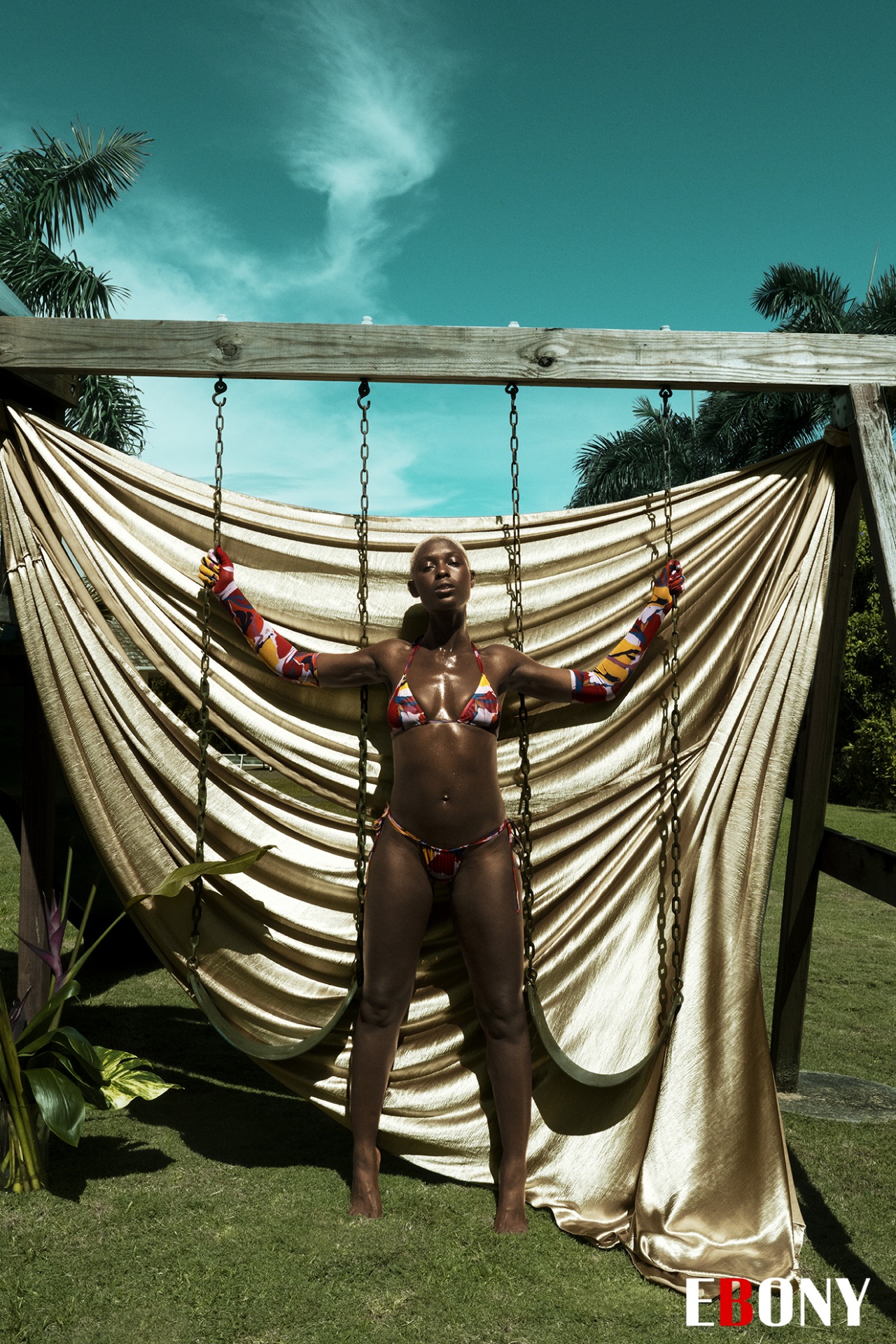
Jodie Turner-Smith wears Gonza. Photo by Artist Lougè Dapper Lou.
Actually, it’s them. The first face I see is Turner-Smith’s. It looks almost engineered, but not by anyone bound by the laws of this earth. This is the work of the divine: Her cheekbones are set high, steps on the way to heaven. The contours of her face are angular and yet still soft. We see each other at eye level through the phone, but her features are so lifted, it almost feels as if I’m looking up at her. Her complexion is the richest brown and gold all at once, moisturized to the strict specifications of any Black mother. Her low buzz cut has the subtle sheen of a well-taken-care-of scalp. I can see only the top half of her outfit: a denim collared shirt, with the first few buttons unfastened. The aesthetic vibe is model off duty. The present situation? Mom on duty.
As the 36-year-old settles into a seat by the window in her suite, it’s not long before a second face appears on my screen. Although at first it’s a hand, a very small one, reaching into Turner-Smith’s shirt. Then it’s a forehead framed by wisps of curls loosened from a topknot. It’s official: The sleeping toddler is now very much awake.
And at the perfect moment. Minutes into our conversation, Turner-Smith and I are talking about jerk chicken, her favorite Jamaican dish to make. “It is really my specialty,” she says. “But my favorite dish to eat is oxtail.” The latter is a luxury these days—oxtail prices have skyrocketed from just over $9 a pound in January 2018 to almost $14. But when the melanin-rich actress was growing up in Peterborough, England, it was the food her mother, her mother’s mother, and several mothers before her ate. Turner-Smith was born in the U.K. to Jamaican immigrants who made sure that, even in a small English city with few other Black people, she stayed connected to her culture.
“THOUGH I GREW UP IN ENGLAND, I NEVER FELT FAR FROM TRADITIONS. MY MOM ALWAYS INTEGRATED OUR JAMAICAN CULTURE INTO OUR LIVES. SHE TAUGHT US HOW TO COOK JAMAICAN FOOD AND WAS ALWAYS SPEAKING TO US IN PATOIS AT HOME. THE INFLUENCE WAS CONSTANTLY AROUND ME.”
– Jodie Turner-Smith
“I lived in a village called Coates, and we were the only Black family there,” she says. As Americans, when we imagine Black Brits, we think of London and its vibrant African and Afro-Caribbean populations. Life in Peterborough wasn’t quite like that. “Growing up, really the only other Black people I interacted with were mostly my family.” Turner-Smith’s mother, Hilda, whom Turner-Smith calls “a Jamaican woman through and through,” played a key role in bridging the cultural gap: making Jamaican dishes; frequently visiting the islands; maintaining connections with their family abroad. “I never felt far from traditions,” Turner-Smith says. “My mom always integrated our Jamaican culture into our lives. She taught us how to cook Jamaican food and was always speaking to my brother, my sister and me in patois at home. The influence was constantly around me.”
That influence still flourishes today. Turner-Smith’s mother lives with her, helping her and her husband, Joshua Jackson, raise little Janie. The food, the patois, the music, the stories—they’re all present in their home, and Turner-Smith already sees how her mother’s Jamaican-ness is rubbing off on her daughter. She shares that Janie is already a fan of dancehall artist Spice and that her patois is coming along. “She repeats everything my mother says,” Turner-Smith gushes. “Her favorite is, ‘Mmm-mmm, no sah!’ ” (“Uh-uh, no sir!”)
The impression I get from talking to the actress is that her mom is truly a force in her life. Like many a Caribbean mother, to this day she pushes Turner-Smith to achieve above the high level she’s already reached. Her tool of choice? Constructive criticism, of course. “My mom came to visit me on set one day. I was doing a scene, and she was there giving me notes,” Turner-Smith shares. “She was like, ‘You need to bring that Jamaican lady type of aggression into the scene.’”
Not angry, fly-off-the-handle aggression. What she’s referring to is far more soulful and potent. It’s a kind of aggression that draws you in and makes you want to slowly back away at the same time. You don’t want to get on her bad side, but you kind of want to see what would happen if you did—and you will accept the consequences with a smile. Turner-Smith redid the take with this energy in mind. Turns out, Mama truly does know best. “The director came running over to me, and she’s like, ‘What is it that you were thinking about when you did that take?’ I said, ‘Actually, it was a note from my mother,’” shares the actress.
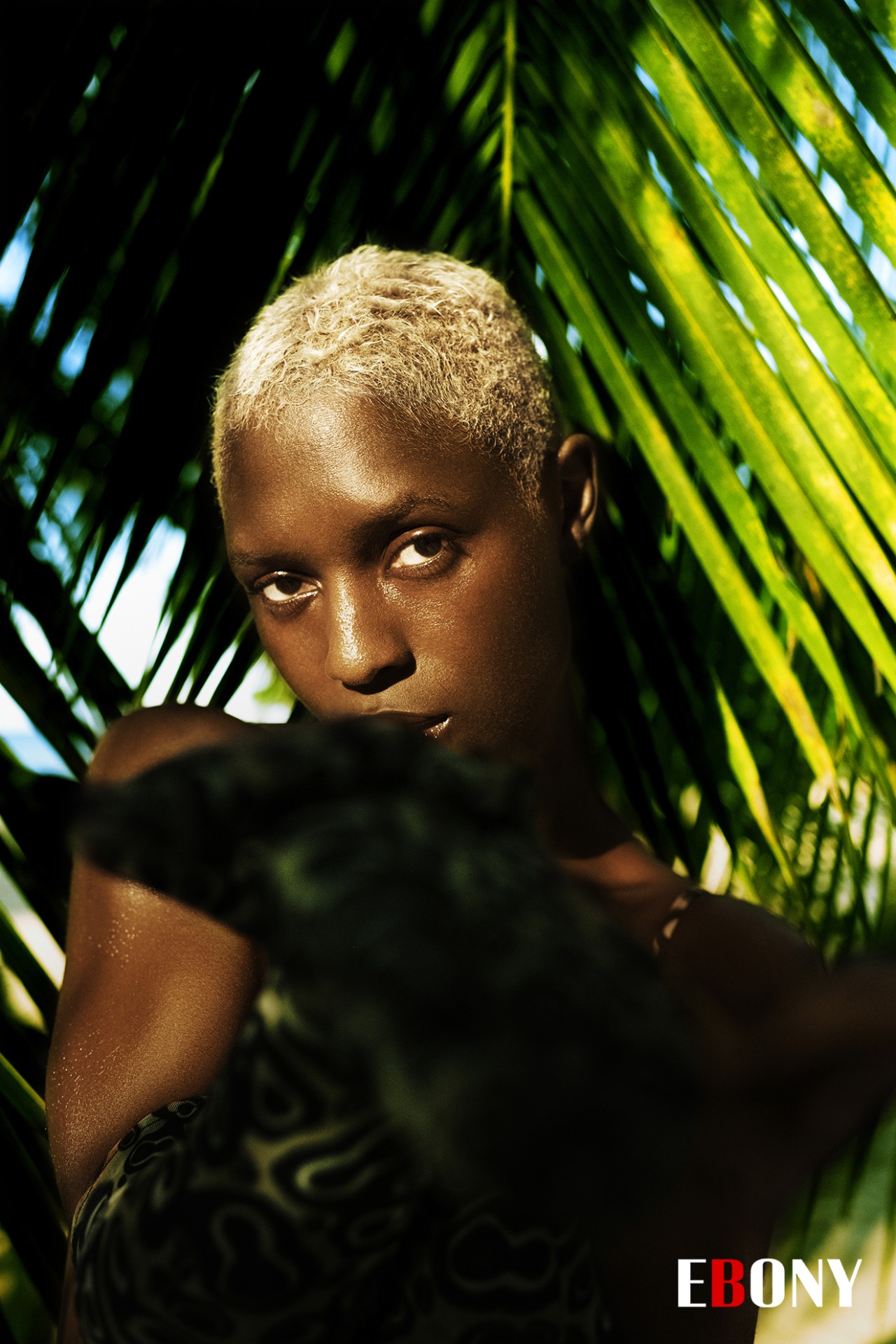
Jodie Turner-Smith wears Gonza. Photo by Artist Lougè Dapper Lou.
“As Americans, when we imagine Black Brits, we think of London and its vibrant African and Afro-Caribbean populations. Life in Peterborough wasn’t quite like that. Growing up, really the only other Black people I interacted with were mostly my family.”
– Jodie Turner-Smith
“When you start scratching at the surface, you see how similar we are.”
Jodie Turner-Smith wears Gonza. Photo by Artist Lougè Dapper Lou.
Turner-Smith appears to have inherited her mother’s drive for excellence and growth in her craft. In Murder Mystery 2, which hit Netflix on March 31, we get to see her in a comedic role for the first time. She plays Countess Sekou, the ex-fiancée of the Maharajah—who was just kidnapped at his own wedding. Sekou has the air of a generationally wealthy African oil heiress who attended boarding school in the U.K. Still, you can’t take her too seriously, because, well, she’s also quite ridiculous. Turner-Smith appears opposite comedy legends Jennifer Aniston and Adam Sandler, who play Audrey and Nick, a detective couple with a struggling private investigator business. Indeed, it sounds daunting—Aniston and Sandler have been doing this since Turner-Smith was still in primary school—but Turner-Smith more than holds her own alongside these seasoned professionals.
On Turner-Smith’s wish list? Jamaica Carnival. In April, EBONY is playing mas (participating in the parade) in her beloved Jamaica, and all of the festivities will be captured throughout the month. We chatted to her about growing up a first-generation British-Jamaican, coming to the United States and how she’s keeping her culture alive at home with her daughter.
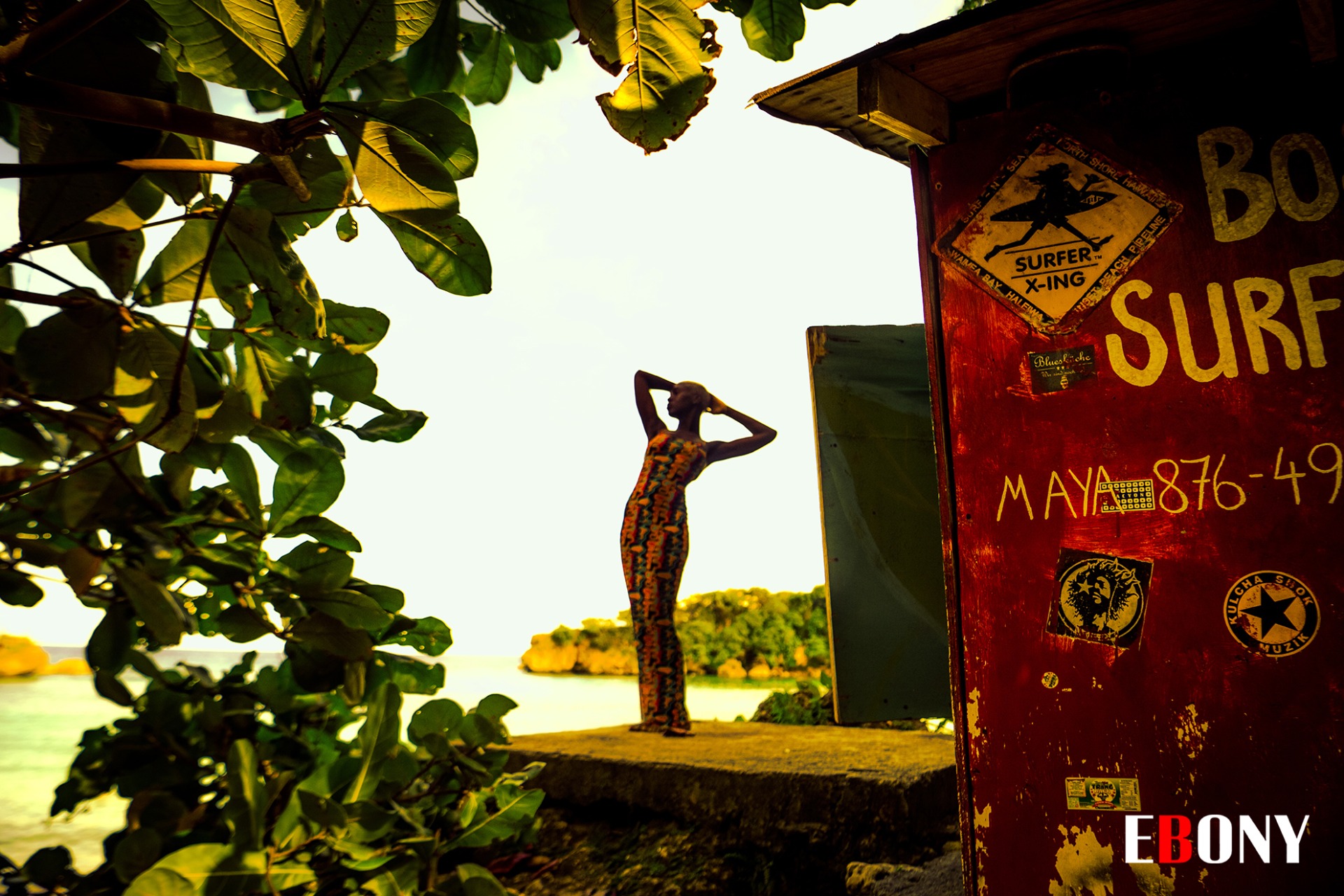 Jodie Turner-Smith wears Gonza. Photo by Artist Lougè Dapper Lou.
Jodie Turner-Smith wears Gonza. Photo by Artist Lougè Dapper Lou.
EBONY: You moved from England to Gaithersburg, Maryland, when you were about 10. What was it like coming to the U.S. as a Black person from a non-American culture to a country with such a vibrant, different kind of Black culture?
Jodie Turner-Smith: I think no matter where you’re coming from, even if it’s from a country that is “wealthy” itself, there’s still this vision of America, that the streets are paved with gold. I remember being very excited to come here and very interested as to what it would be like. I was also excited about the idea of being in a more diverse place, seeing more Black people that I wasn’t related to. I was like, That’s gonna be really cool.
My mom definitely had more of a community of Jamaican friends in Maryland than she did when we were in England. But there were also a lot of people who were Asian, Latino, Black—I had a friend from Sri Lanka. It was much more diverse than where I had been living.
The experience of being Black changes from country to country. Do you think you experienced your Blackness differently when you came to the U.S.?
American history is its own thing, and the Black experience in America is very specific. This country was built by Africans. And from the beginning, Black people were excluded from the “American dream.” That has its own unique patina.
“There are nuances to being Black in all the different places in the diaspora. There are nuances to how you’re received and embraced—or not embraced—by other people, white people.”
– Jodie Turner-Smith
In some ways, the experience is different, but in some ways, it’s sort of the same. There are nuances to being Black in all the different places in the diaspora. There are nuances to how you’re received and embraced—or not embraced—by other people, white people.
Absolutely. I’d love to talk more about your relationship with your Jamaican culture growing up. Did you visit a lot? What do you remember that experience being like?
Actually, when I was very young, I lived in Jamaica for a little bit. My mom had to work in America. She was meant to be there for six months—she didn’t stay that long. She was like, “Absolutely not.” It’s crazy that my father even asked her to do that. I must have been 2 months old when she left. I can’t imagine anyone telling me, “You need to leave your child,” at 2 months.
After [we moved back to England], there were many times I went to visit Jamaica with my mom. But I feel like I developed a closer connection to Jamaica as I got older, when I started to experience the country without my family.
The only way to really get to know something is to have your own experience of it. That deepened my appreciation for the culture and for the fact that this is my heritage—this is where my mother came from, and her mother, and her mother. It’s really amazing. Now I try to make it a point to go at least once a year.
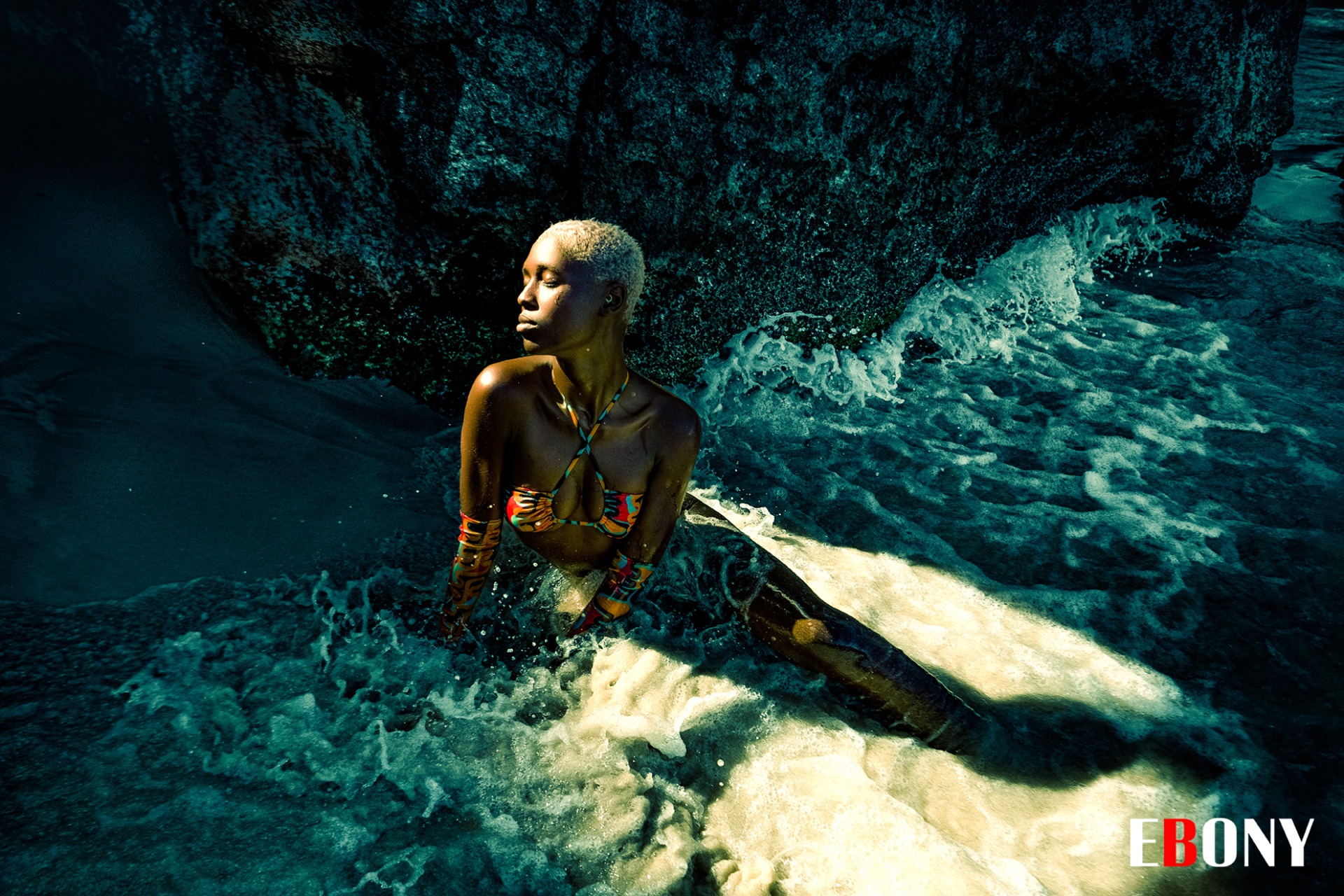 Jodie Turner-Smith wears Gonza. Photo by Artist Lougè Dapper Lou.
Jodie Turner-Smith wears Gonza. Photo by Artist Lougè Dapper Lou.
Bridging that gap and passing those cultural traditions down as a first gen is obviously important to you. Have you ever brought your daughter to Jamaica?
Yes. I love seeing my daughter in Jamaica. She’s not old enough to really understand that this is where part of her heritage comes from, but the way that she loves it there, and she’s so happy going there, and the way she talks about it—that makes me really happy.
[Speaking to her daughter off-screen] Darling, do you love Jamaica?
Janie: Of course I do!
I love seeing you interact with Janie. It’s just so…intuitive the way you’re able to address her needs. It’s powerful to witness.
Becoming a mother is the best thing that ever happened to me, Even when my daughter is having a meltdown because she’s not feeling well—like right now—it’s so rewarding. It’s so special, so divine. It’s the most incredible thing I’ll ever do in my life.
EBONY is traveling to the Caribbean in April to cover Jamaica Carnival. Have you ever been?
I’ve never been to Jamaica Carnival, I’ve only been to Notting Hill Carnival, in London. First of all, it’s intense. The first day we went we were like, ‘Wow, this is intense,’ and the second day we went, I brought my mom. She was parting the crowd like the Red Sea, pushing people out of the way! We turned up, we had a good time. Listen, I love to dance, I love to have fun.
“I’m a slow-wining girl. I’ve got that slow wine, and I’m ready.”
Jodie Turner-Smith
Jodie Turner-Smith wears Gonza. Photo by Artist Lougè Dapper Lou.
What’s your go-to dancehall move?
I’m a slow-wining girl. I’ve got that slow wine, and I’m ready. Also, [my vibe is very much]the girl in the Sean Paul music video for “Get Busy” [who pats her chest and wines her waist.]She is me. I am her.
I think about her quarterly! A dancehall icon. Okay, let’s talk about your role in Murder Mystery 2. We know you from playing more serious characters like Anne Boleyn, or Queen in Queen & Slim. What was it like stepping into a comedic role and learning the intricacies of being a comedic actor?
I intentionally said I wanted to start 2023 laughing. [It’s an honor to work with] Adam and Jen—who are super-generous actors—and not only feel like you’re playing with these people, but they think you’re funny and want you to be here. They’re the people I’ve looked up to in the comedy space. It was such a big vibe for me, and totally out of the box, as well.
I had my acting coach to support me in figuring out how to do this. Comedy, in many ways, is more challenging than drama. It’s an art. But it was a unique challenge. I’ve never done something like that before, but I felt I was ready for it.
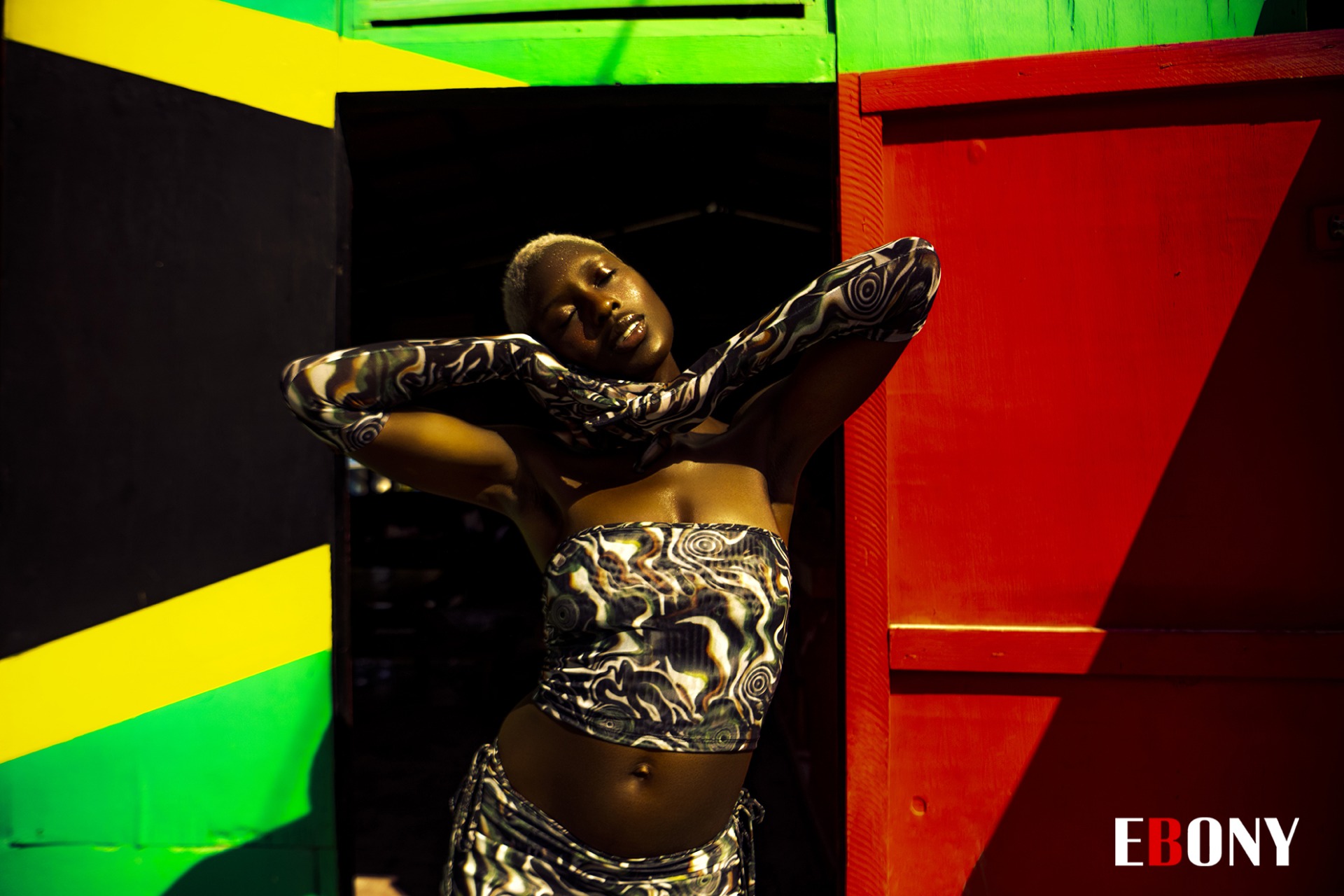 Jodie wears Gonza. Photo by Artist Lou ‘Dapper Lou’ .
Jodie wears Gonza. Photo by Artist Lou ‘Dapper Lou’ .
You used the word “generous” to describe Jen and Adam. Did you learn anything from them on set?
More than anything, I felt I learned ways of being from them. They say, “Never meet your heroes,” but I met them, and they are so cool and down-to-earth. The way they run their set—everyone there is kind and giving, nobody’s an a-hole. I think it was Jen who said she has a strict “no a-hole policy.”
You’re a lover of fashion and have a very strong style presence. I’m wondering which Black designers you’re feeling right now?
I really love Harbison. I also love Fe Noel and Bianca Saunders. I’m still waiting to get my real Bianca Saunders moment. She’s super talented, and she makes menswear. I’m trying to have a moment in that.
I’m seeing the vision, girl, and will be on the lookout. Now, what would you say is your signature style habit? That one little thing you like to add to an outfit to really make it yours.
I don’t have one signature thing, but I love to be extra. Like the other day, I had a look that needed a fierce wig. Or sometimes, it’s about the jewels. Some would say that I wear too much jewelry, but I aspire towards the level of jewelry that rappers wear. Chains. Drip. Actually, you know, maybe one of my “things” is wearing rings on every finger. My daughter is so funny, she’ll sometimes pick up all my rings and put one on each finger and then say, “Look, I’m like Mama.” She just gets it.
You’ve experienced life as a Black person in the U.K., the U.S. and the Caribbean. What has it helped you understand about the connections throughout the diaspora?
There is this sense of separation between us that I think shouldn’t really exist. We are all connected. When you start scratching the surface, you see how similar we are. My friend sent me a video the other day about a Black community in Colombia.
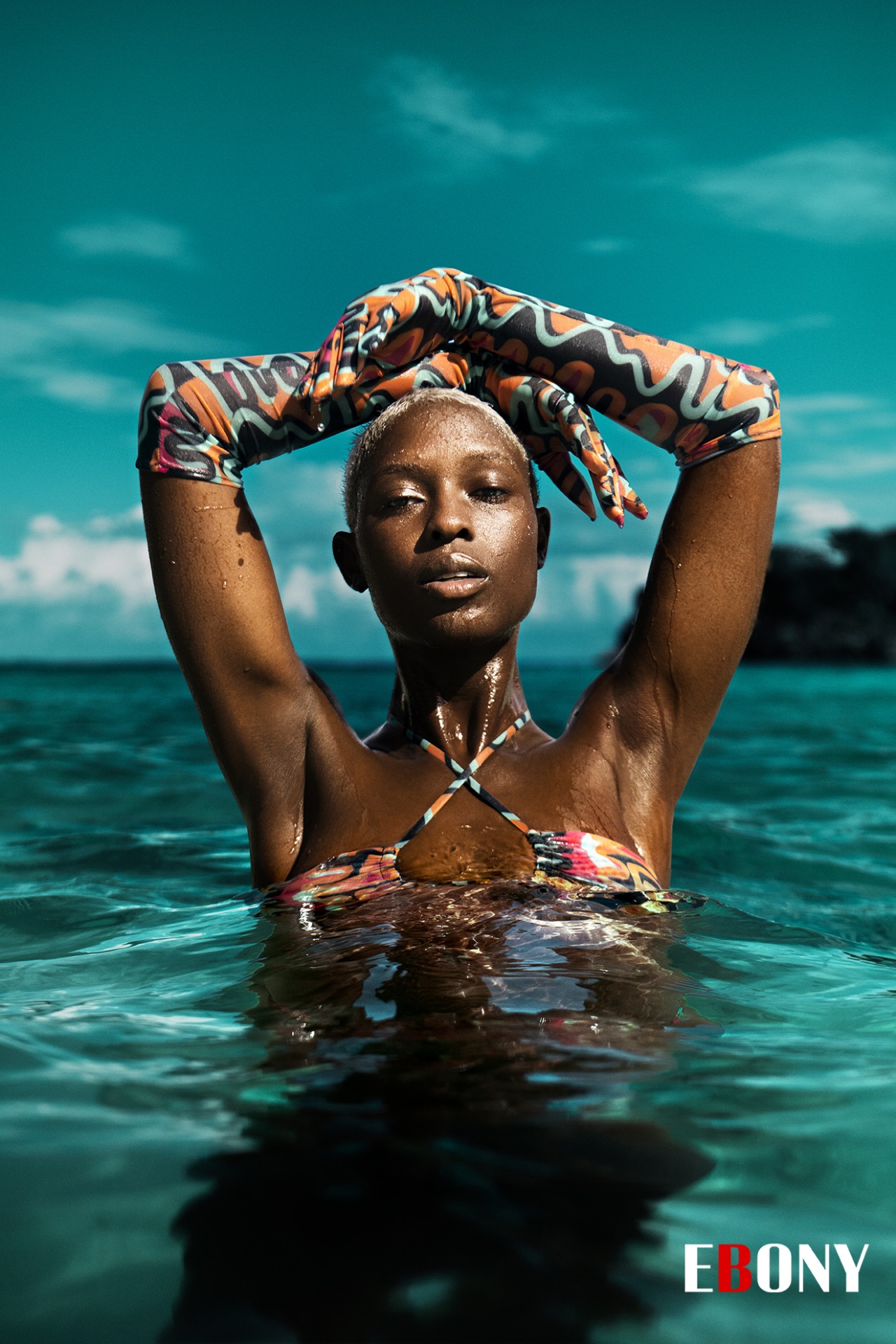
Jodie Turner-Smith wears Gonza. Photo by Artist Lougè Dapper Lou.
It was one of the first communities of free Black people in that area. The traditions they have and that they’ve held onto made me think we need to stop seeing ourselves as separate from one another. And that’s not just a Black problem; it’s a world problem. It’s very easy for us to be in our country and say, “What’s happening over there has nothing to do with us. I’m not connected to those people or their struggle.”
Find those similarities. If we really examine how similar we actually are, it’ll blow our minds.
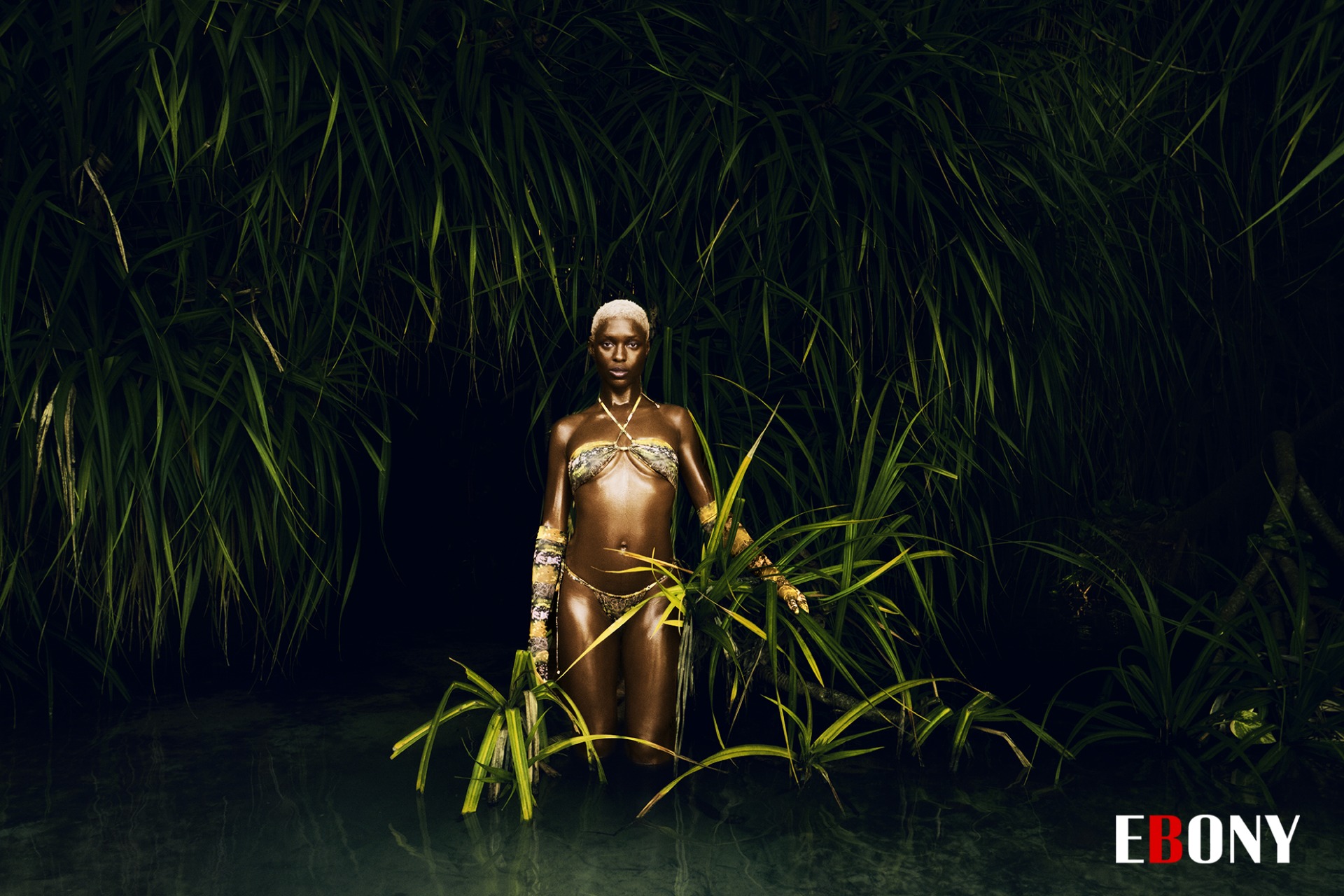
Jodie wears Gonza. Photo by Artist Lou ‘Dapper Lou’ .
Jihan Forbes (@itsjihanm) is a writer, editor, beauty industry professional and former digital editor at Allure. The native New Yorker has over a decade of experience in the fashion and beauty spaces. Her passions: clothing, Carnival, cosmetics and cannabis.
PHOTOGRAPHER: ARTIST LOUGÈ @DAPPERLOU
EDITOR-IN-CHIEF & SVP, PROGRAMMING: MARIELLE BOBO
CREATIVE DIRECTOR: RASHIDA MORGAN BROWN
PHOTO DIRECTOR: KEITH MAJOR
ASSOC. CREATIVE DIRECTOR/HEAD OF VIDEO: STEVEN CORNELLO
VIDEO: MEGA MEDIA
DIRECTOR: GERRAD WILSON
DP: ANDREW FAIRBANK
VIDEO PRODUCER: ERIC DAVIS
SOUND MIXER: KEVIN BAZELL
PRODUCTION ASSISTANT: APU GOMES
STYLIST: FANCY GOMEZ
EXECUTIVE PRODUCER: TRACEY WOODS
LOCATION: SHOT AT GEEJAM HOTEL IN PORT ANTONIO, JAMAICA
Previous
cover stories


